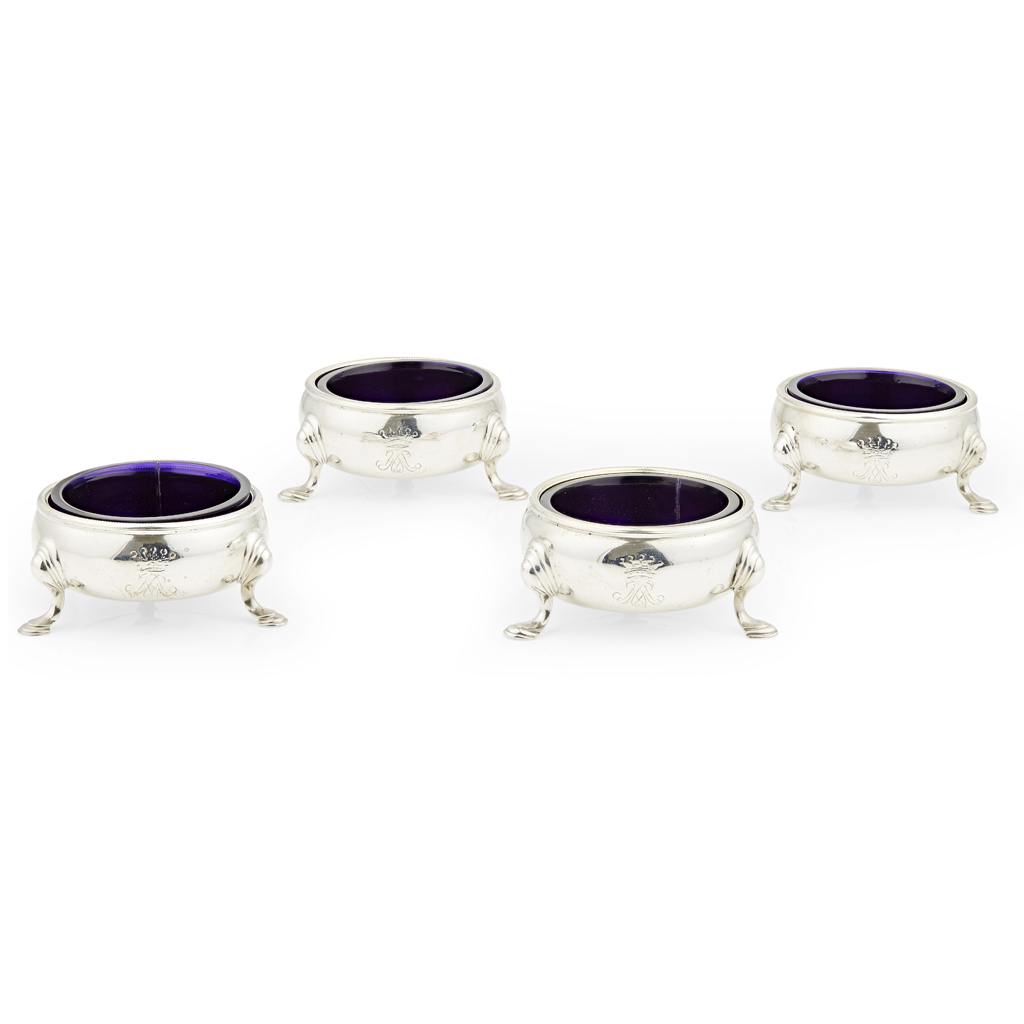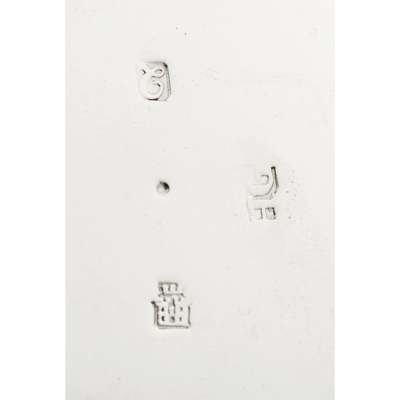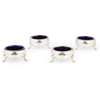
Lot 511

THE HOPETOUN SALTS - A SET OF FOUR MID EIGHTEENTH CENTURY SALTS
JAMES KER, EDINBURGH 1745








Scottish Silver & Applied Arts
Auction: 15 August 2018 at 11:00 BST
Description
The slight bellied bodies with corded rim and with engraved monogrammed cipher and coronet above, raised on three stepped and hoof feet, the interiors gilded and with later liners (4)
Dimensions
7.3cm across, 12.8oz
Footnote
Provenance:
Commissioned by John Hope, 2nd Earl of Hopetoun
The monogram and coronet engraved to these salts is recorded on a fine Montieth by James Ker, hallmarked 1746, which likely formed part of this original commission which included these salts, see 'Silver; Made in Scotland' NMS 2008, item 4.37, illustrated page 80. Also Georgina Lee, British Monteiths p 106, item 310
The Hopetoun family for two generations, Charles and John Hope 1st and 2nd Earls, were perhaps the most important commissioners of silver in Scotland. Their influence on the Edinburgh trade appears to have not only given many valuable and important commissions but raised the challenge of the goldsmiths to new heights to create truly fashionable and important items. As with all family commissions the success of the family closely compares to the need for silver, the expansion of Hopetoun House and its formal rooms necessitated the purchase of new and fashionable silver from Edinburgh's finest makers.
Although now, in parts, dispersed through auctions in 1953 and 1977, the collection of silver held within the house was vast and it epitomises the status that silver brought to families and the much discussed idea of wealth held in silver and reflected their status.
No doubt much was re worked and melted over the decades into new fashionable wares but a number of key pieces are still extant. Important silver bearing this provenance can be seen within institutional collections, including a unique pair of wall sconces and a fine five-piece tea service both made in Edinburgh which form part of a wider collection of Hopetoun silver within the National Museum of Scotland collection (see Silver; Made in Scotland, NMS 2008 for illustration of these and other items) and a monumental wine cooler and cistern made in London by William Lukin, housed within the Victoria & Albert Museum.
The importance having a client such as the Hope family cannot be over stated and the status this must have given the Goldsmiths would surely have impacted on their wider business. In the small world of 18th century Goldsmiths of Edinburgh it is interesting to note the choice of Hope to follow a 'family' of makers and support it for decades.
This is seen with some of the earliest pieces by James Penman, perhaps the most influential maker of his time, who trained both Harry Bethune and Thomas Ker, who in turn trains James Ker and continuing with successful training and partnership of James Ker and William Dempster. All these makers are closely connected with the Hopetoun story and owe a great debt to this relationship over 50 years.







